These aren’t the biggest moments, or the most memorable, but those that allowed the competition to evolve into the compelling, dramatic duel it is today.
By Ryan Herrington
Chances are Samuel Ryder, the man who helped inspire the competition that bears his name, would struggle to recognize the modern match that will be played for the 42nd time this week at Le Golf National. Even if you accept the premise that the English seed merchant was a man of vision, to think that he knew one day this test between professional golfers from both sides of the Atlantic would evolve into a multimillion dollar spectacle that entrances an international audience? Hardly! The mere fact the Ryder Cup includes golfers from continental Europe and is going to be played in of all places France would have been a bit mind-blowing.
Yet at its core, the Ryder Cup that will take place is something Ryder likely hoped would come to pass. Beyond a celebration of the game and its gentlemanly traits, Ryder was acutely interested in the competition part of the competition. That it’s become so fierce, with both sides spending the full two years between matches to prepare for the next, wouldn’t have been something he predicted, but would no doubt be something he would have enjoyed.
How exactly did the Ryder Cup get to this place? We traveled back in time, looking through the match’s history and try to identify various moments that have helped nudge the competition to its present state: a clash of prideful golfers, playing not for themselves but for each other and for their countries. These aren’t the biggest moments in Ryder Cup history, or even the most memorable necessarily. But they are individual moments that shaped what we’ll see over three days outside Paris and while not long after the final shot is struck on Sunday, we’ll be longing for Whistling Straits and 2020.
[divider] [/divider]
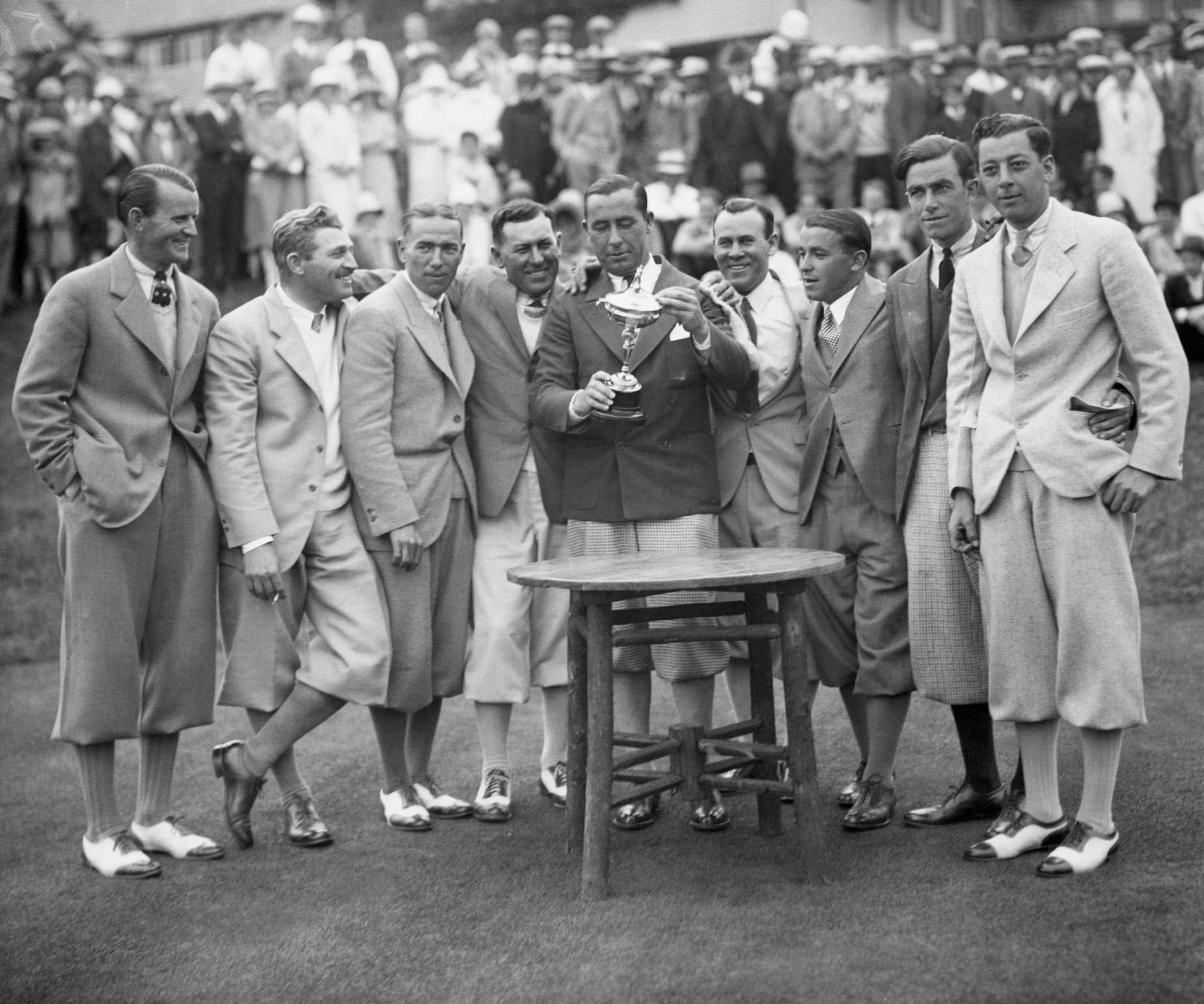
Bettmann
The first victorious U.S. Ryder Cup team from 1927 (left to right): Al Waltrous, Bill Melhorn, Diegel Leo, F. Golden, Walter Hagen, Joe Pennoza, Gene Sarazen, Johnny Farrell, and Joe Turnesa.
1927: Begin at the beginning
To get to where the Ryder Cup is today, the event had to get started. The inaugural match was played at Worcester (Mass.) Country Club in 1927 and was the culmination of six years of discussions regarding the viability of a competition pitting professionals from the United States against their peers from Great Britain. Twice before an unofficial version of the match was held, first in 1921 at Gleneagles in Scotland and then again in 1926 at Wentworth Golf Club in England. (Both times the Brits routed the Americans.) At Wentworth, Englishman Samuel Ryder and American Walter Hagen laid out the plans for a regular competition, the match moving back and forth across the Atlantic. Ryder commissioned a trophy for £250, and a tradition was born.
[divider] [/divider]

Hulton Archive
The Whitcombe brothers, Reg, Ernest and Charles, all competed on the 1935 Ryder Cup team for Great Britain, but they were no match for the Americans
1935: U.S. begins its dominance
Lost to history is the fact that the early years of the Ryder Cup were highly competitive, the two sides splitting the first four matches, each winning at home. But that would change starting in 1935 at New Jersey’s Ridgewood Country Club. British captain Charles Whitcombe, playing with his brothers Ernest and Reg, were no match for a squad consisting of Hagen, Gene Sarazen, Horton Smith and Craig Wood, among others. The Americans won 9-3 and would begin a run of seven straight matches in which they would get the best of the Brits.
[divider] [/divider]
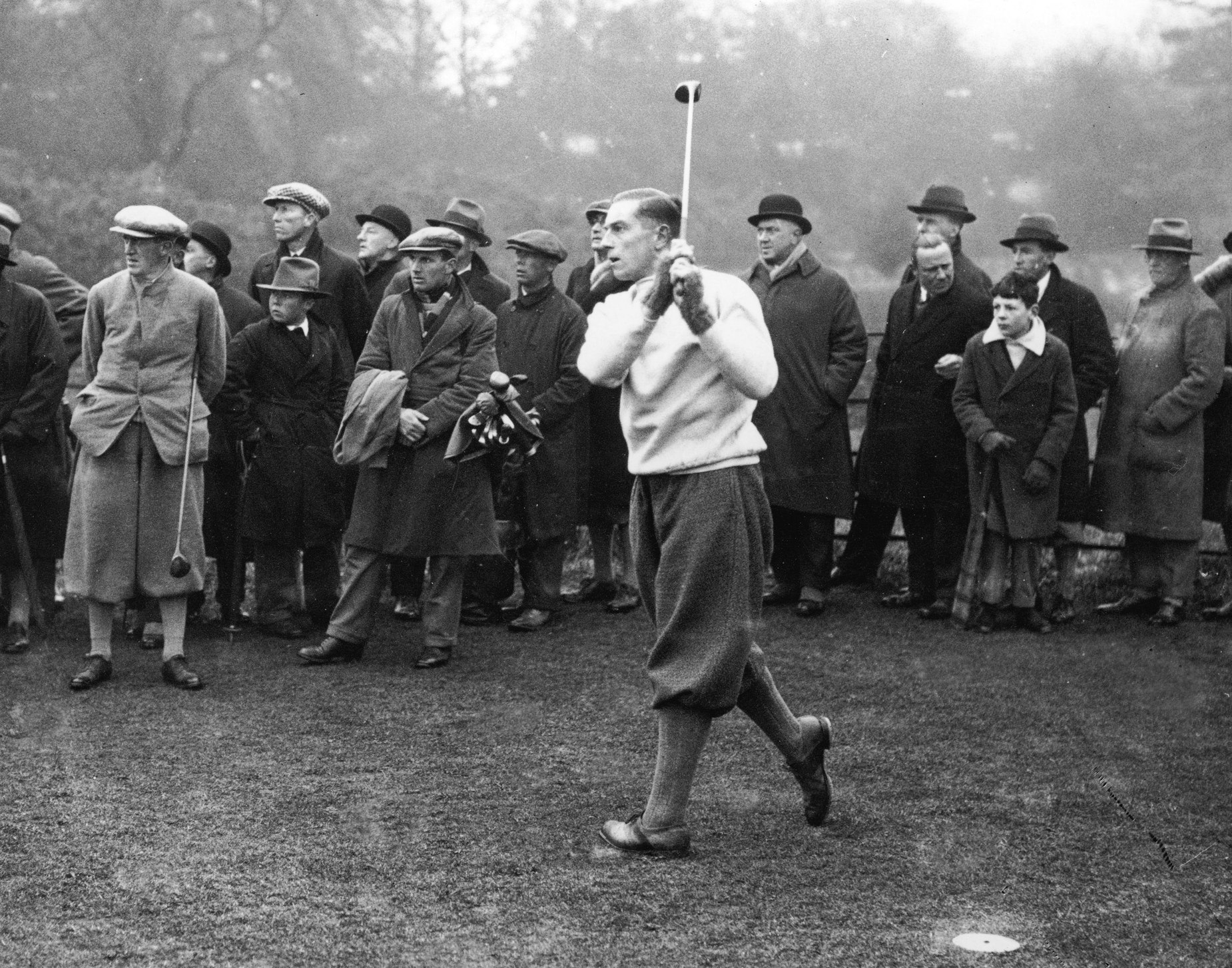
Fox Photos
Sir Henry Cotton competes in the 1947 Ryder Cup at the Portland Golf Club.
1947: Surviving the war
With the matches postponed four times during World War II (1939, 1941, 1943 and 1945), that they would resume at all was not a foregone conclusion. And much of the credit for the fact that they did belongs Robert Hudson, an Oregon fruit grower and a member of the PGA Advisory Committee. Hudson helped secure Portland Golf Club as a venue and then paid for the British team, led by Sir Henry Cotton, to travel by boat (the Queen Mary) to the U.S. and then by train across country to Oregon. The hospitality ended there, as the Americans claimed a 11-1 victory.
[divider] [/divider]
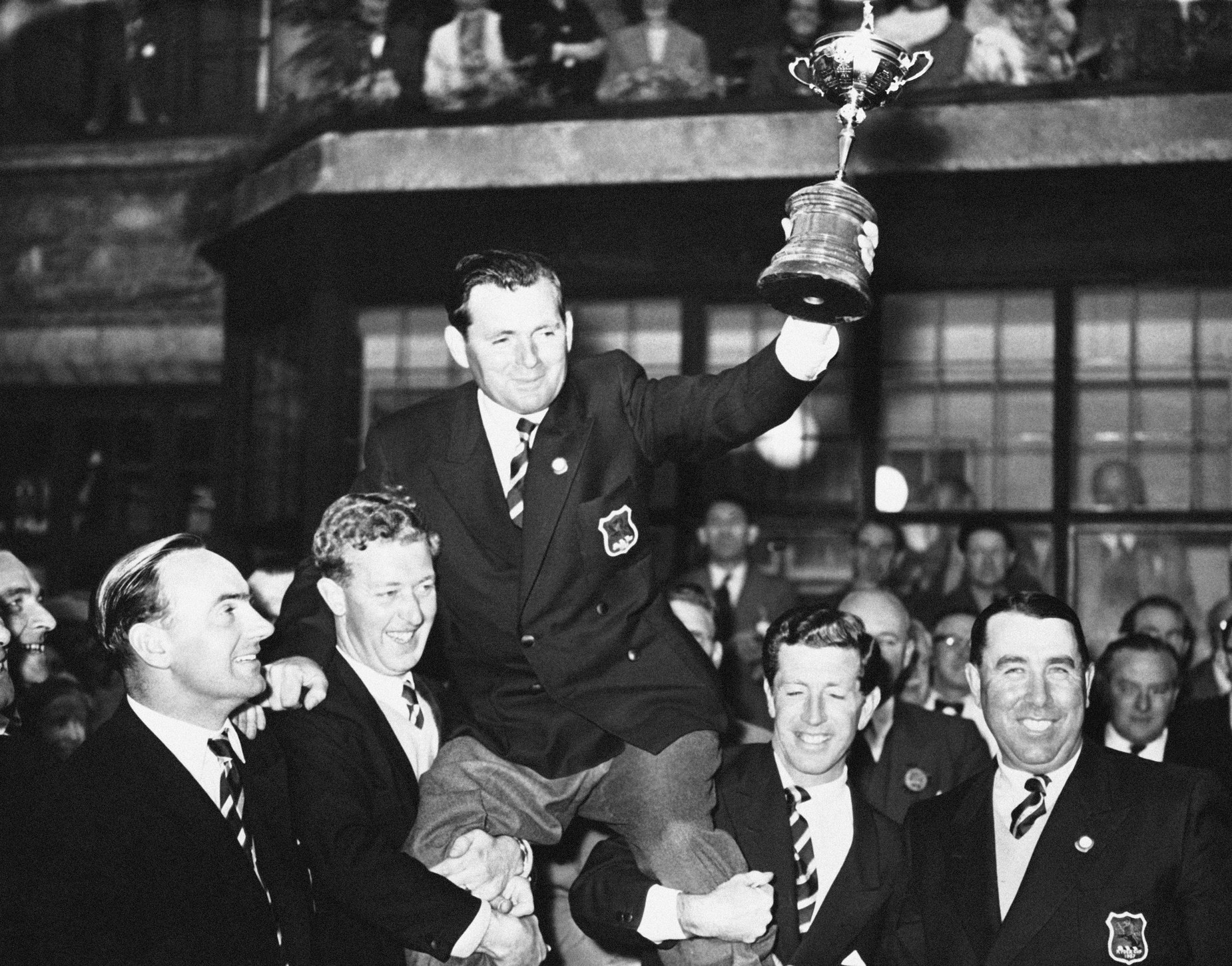
Bettmann
In 1957, Dai Rees captained the British Ryder Cup team to victory for the first time since 1933.
1957: Finally a British win
Dai Rees was just 44 when he was tapped to captain the British Ryder Cup team for the second of his record five times. Rees led by example, winning both his matches and inspiring his teammates at Lindrick Golf Club to do the seemingly impossible, defeating the Americans, 7½-4½, the Great Britain’s only Ryder Cup victory between 1933 and 1985.
RELATED: 9 things you need to know about the 2018 Ryder Cup
[divider] [/divider]
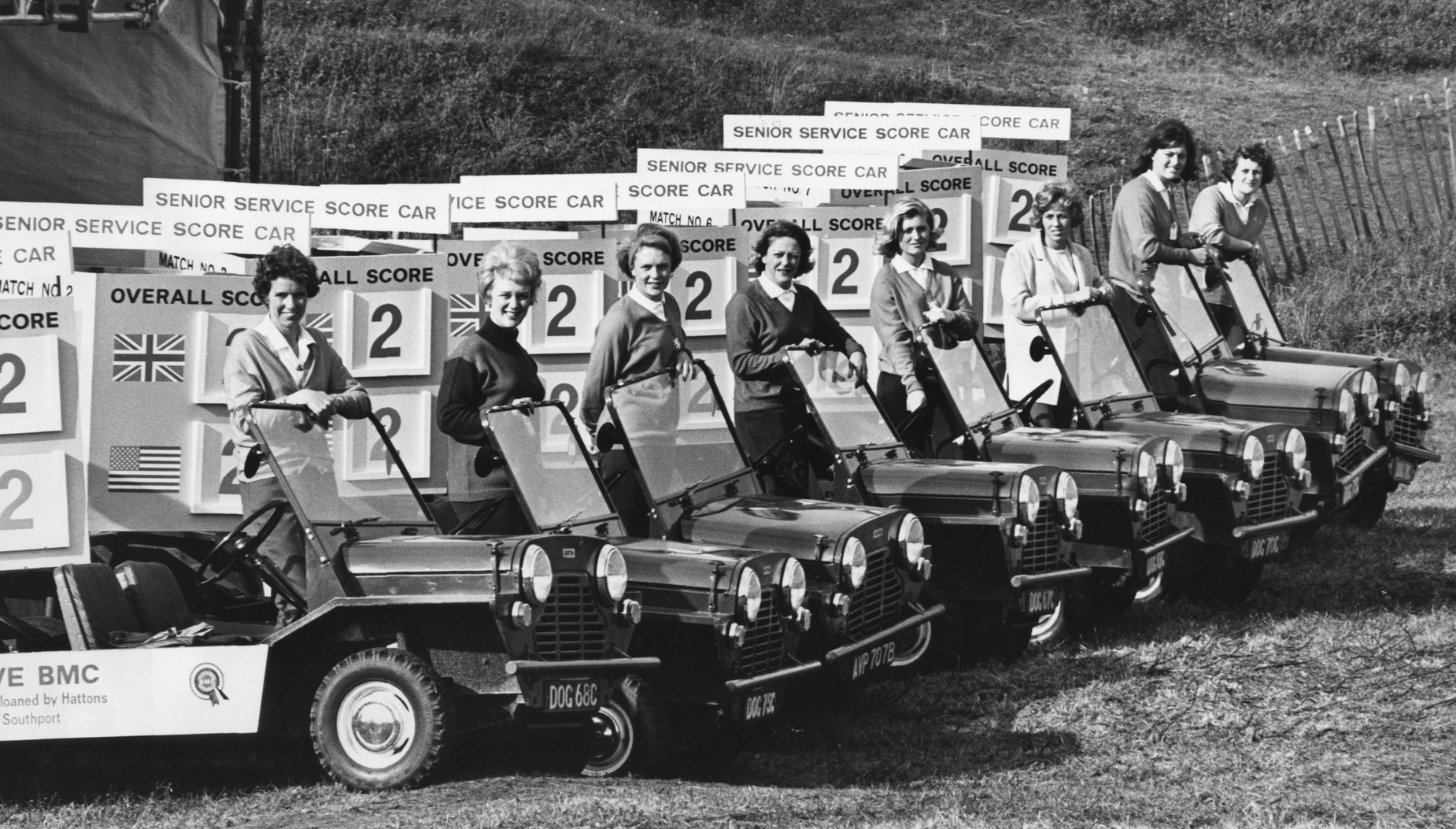
Ted West
Eight female amateur golfers at the wheel of their mini mokes at Royal Birkdale in Southport. They will drive around the golf course during the upcoming Ryder Cup, announcing the state of play.
1965: Modern amenities
The commercial aspects of the modern Ryder Cup are inescapable these days, but much of their origins can be tied to the 1965 match at Royal Birkdale. It was there that Brian Park, a Birkdale member, donated £11,000 to help promote the match. The money was used to expand services for spectators, including the creation of a hospitality pavilion. A tented village was built and souvenir programs were sold. Scorekeepers carried individual match results on standards. The amenities didn’t change the outcome of the event—the U.S. won 19½-12½—but it did change people’s thoughts about what the event could become outside the ropes.
[divider] [/divider]
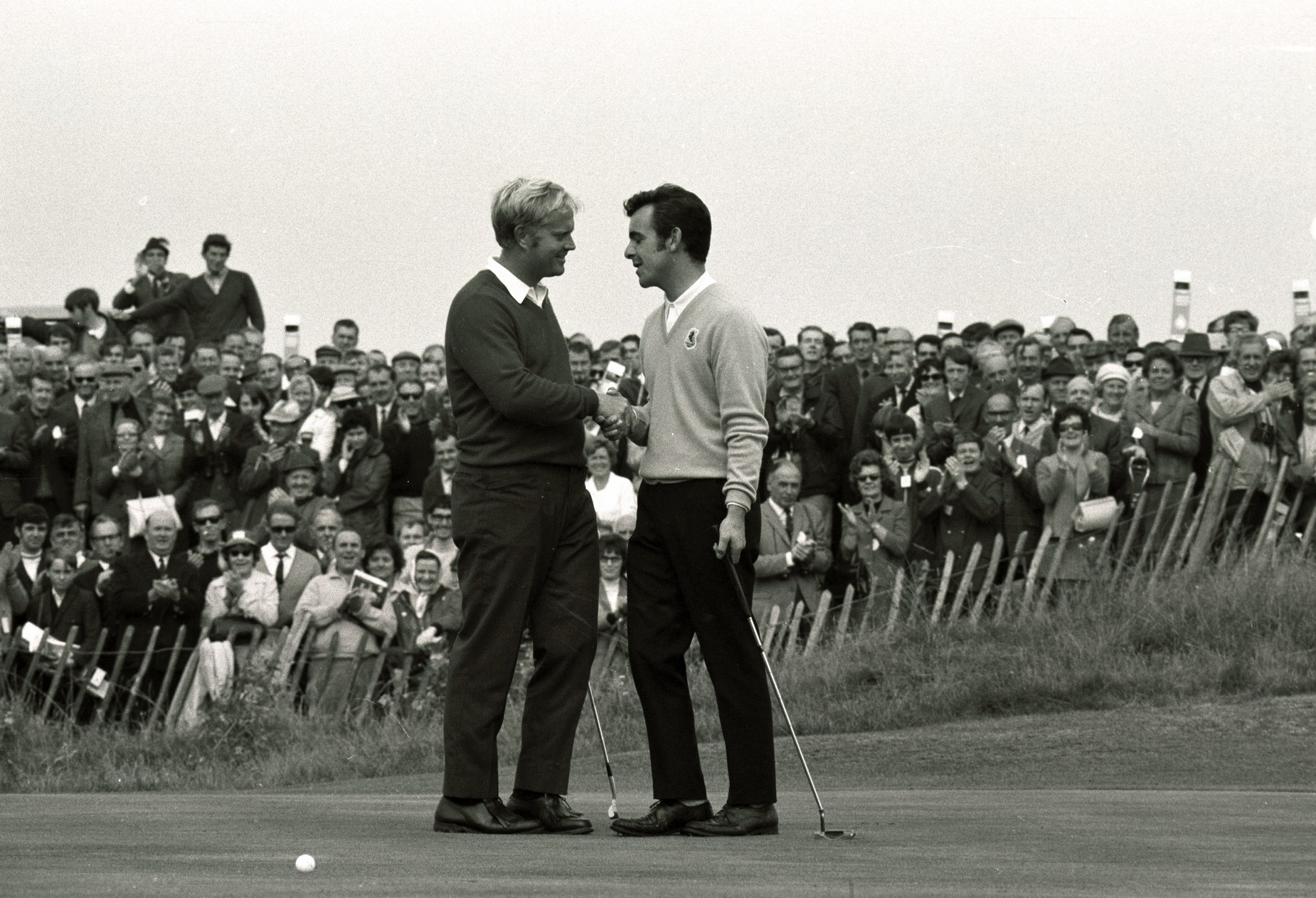
PA Images
Nicklaus and Jacklin walk off the 18th green at Birkdale after a gesture of goodwill.
1969: The Concession
The first-ever tie in Ryder Cup history came when Jack Nicklaus, then a Ryder Cup rookie, gave Tony Jacklin a short par putt on the 18th hole in their singles match, halving their singles match and the overall competition. “I didn’t think it was in the spirit of the game to make Jacklin have a chance to miss a two-footer to lose the match in front of his fans,” Nicklaus said of his gesture, “The Concession” going down in history as one of golf’s finest displays of sportsmanship. But it wasn’t necessarily regarded so highly among everyone, demonstrating the competitiveness that was beginning to emanate from the match. “When it happened, all the boys thought it was ridiculous to give him that putt. We went over there to win, not to be good ol’ boys,” said American captain Sam Snead.
[divider] [/divider]
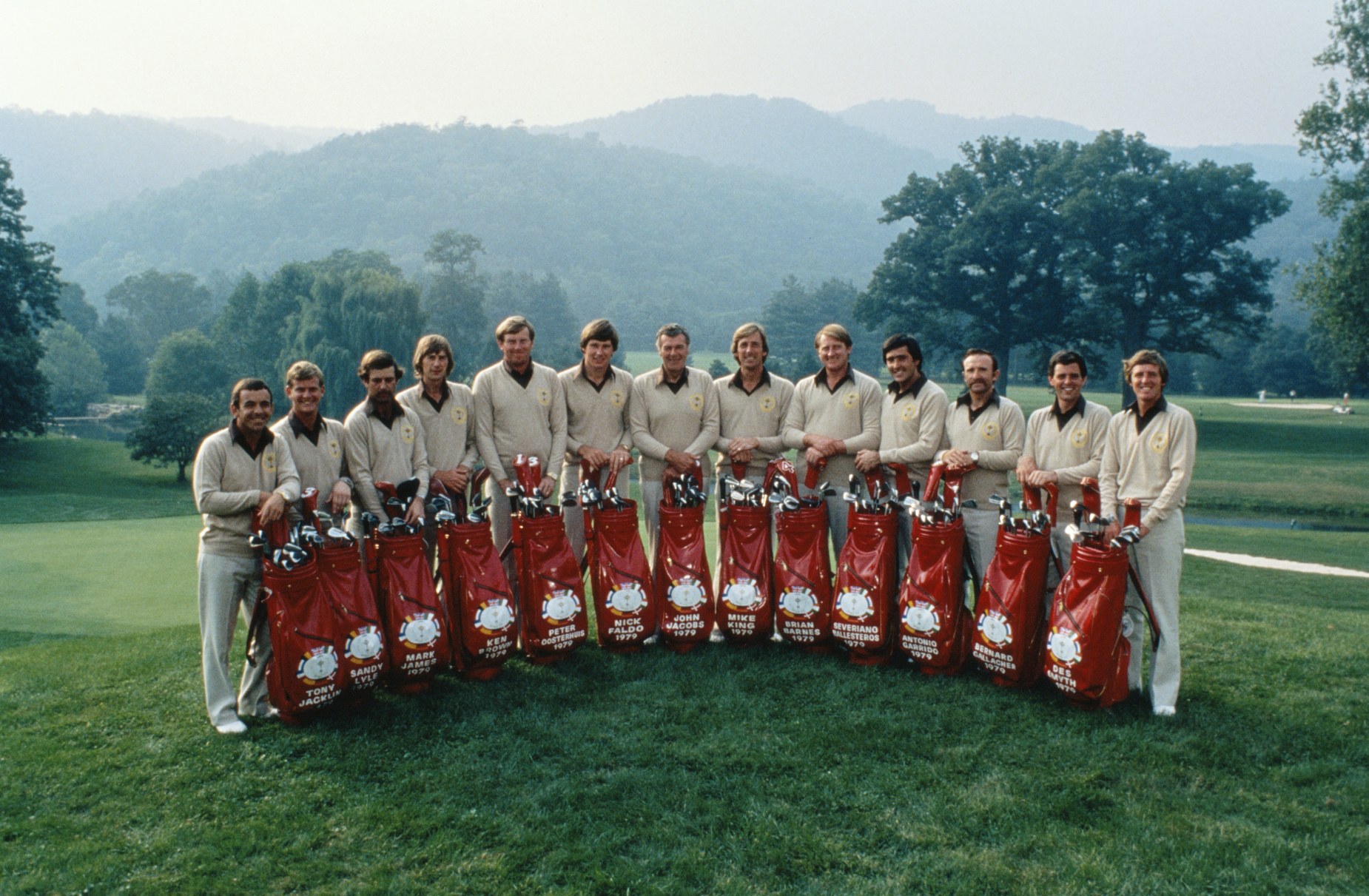
Getty Images
In 1979, the GB&I Ryder Cup side was expanded to include all of Europe.
1979: Europe joins the mix
To address the lopsided nature of the matches, Ireland was allowed to join the Great Britain team in 1973, but that did little to make things more competitive. So ahead of the 1979 match at The Greenbrier, it was agreed that the GB&I side would be expanded to include all of Europe. In the short run, it didn’t do much; the Americans won easily again, 17-11. But with Spain’s Seve Ballesteros making his debut at 22, it wasn’t the fate of Ryder Cups to come had been altered. Another footnote to this event: It was the first time that “The Envelope” was employed, where the captains on each team would put the name of a player into a sealed envelope in case either team had an injured player that forced it to drop to 11 players for Sunday singles. The result would be a half-point for each team in the one match that didn’t go off.
[divider] [/divider]

A tearful Sam Torrance becomes a Ryder Cup legend with a memorable birdie putt.
1985: A European first (of many)
An 18-foot birdie putt on the final hole at The Belfry from Scotland’s Sam Torrance to beat Andy North, 1 up, was the deciding point in Europe’s first Ryder Cup victory and the first loss for the Americans in 28 years. Much is made of the Euro’s victory two years later at Muirfield Village, the first time they’d win on foreign soil. But the psychological impact of this initial win can’t be underscored. The decision to open up the squad to all of Europe had paid its first dividends, as it would many times in the future.
[divider] [/divider]
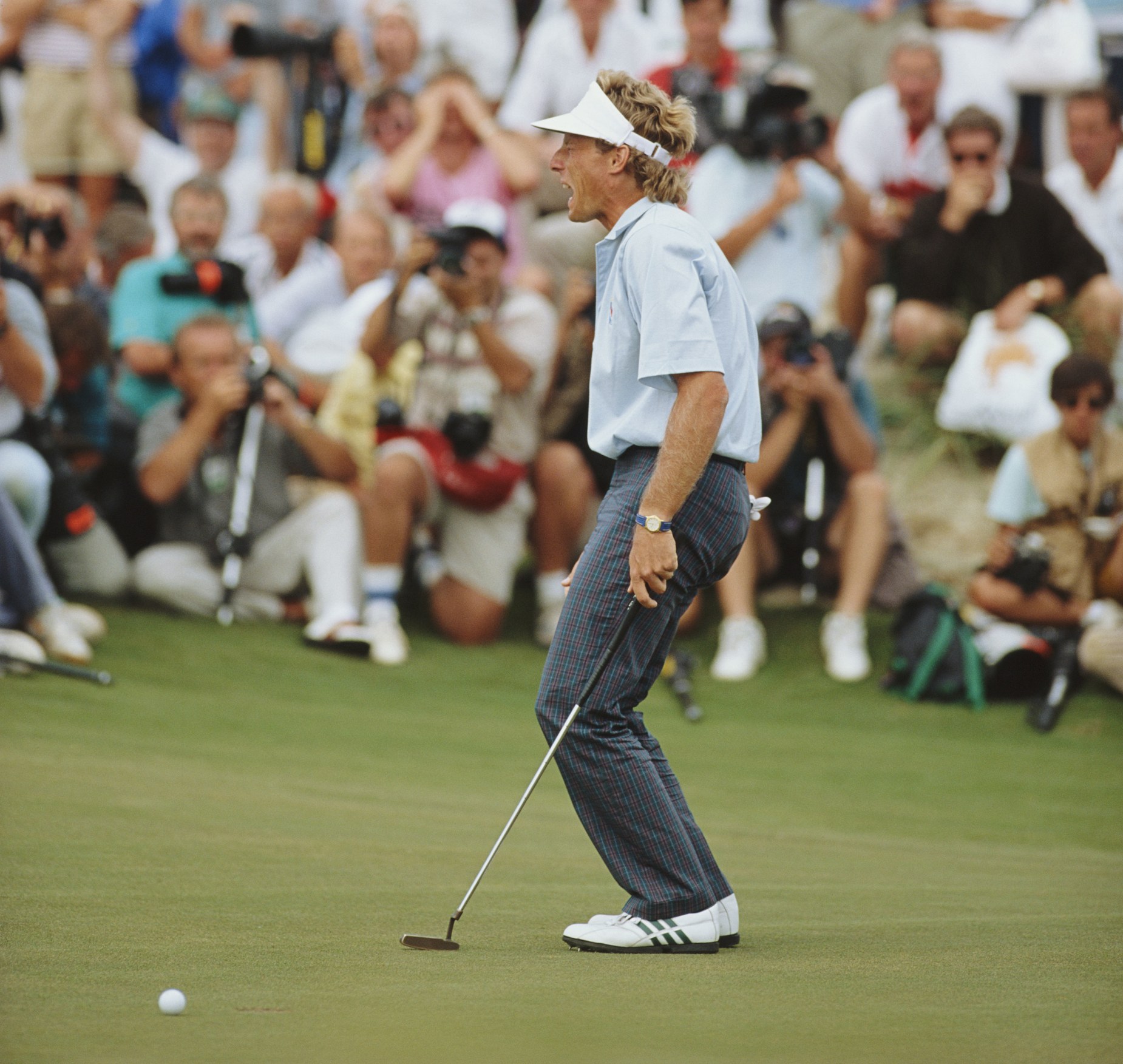
David Cannon/Getty Images
Langer’s 18th hole miss gave the Americans the victory in 1991.
1991: The War by the Shore
Revisionist history likes to say that the Ryder Cup had been the gentile affair of “The Concession” up until the 1980s, despite the numerous instances of contentiousness that dotted the match throughout its history. But the 1991 edition at Kiawah Island indeed had a different feel, egged on by the fact that the Americans were in the midst of their longest stretch without winning the Cup. A raucous and partisan crowd amped up the atmosphere at the Ocean Course. Combined with just how close the competition was, it created the most highly charged atmosphere in memory. Famously, it all came down to the final match between Mark Calcavecchia and Bernhard Langer, then then down to a Langer putt on the 18th hole. Make and the Euros win again. Miss, and the Americans prevail. You didn’t need to watch to know what happened. The sound of the roof coming off the Ocean Course gave it away.
[divider] [/divider]
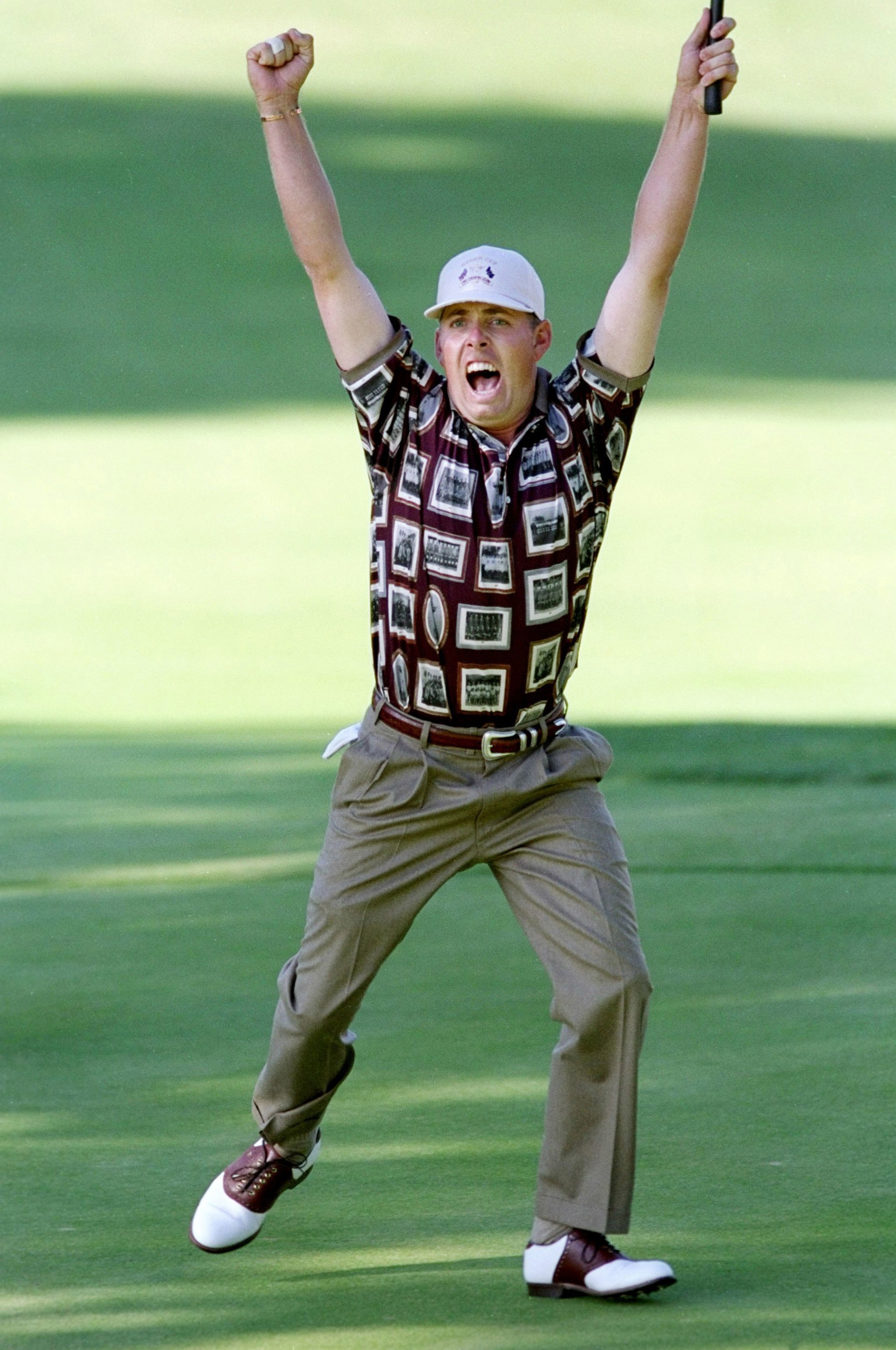
Rusty Jarrett/Allsport
Leonard’s look after making the birdie on the 17th at Brookline was priceless.
1999: The Comeback
The Country Club offered another highly partisan crowd backing the American team, although it appeared Sunday would be one for the Euros as they took a seemingly insurmountable 10-6 lead into singles play. But a rally unseen to that point in Ryder Cup history, predicted the night before by captain Ben Crenshaw, changed everything. The U.S. would win 8½ of the 12 available singles points, Justin Leonard’s birdie putt on the 17th clinching the half point needed for the U.S. to pull over the improbable. Just when the Ryder Cup looked like it couldn’t become an even more dramatic event than it already evolved into, Brookline set a new standard for drama and excitement.
[divider] [/divider]
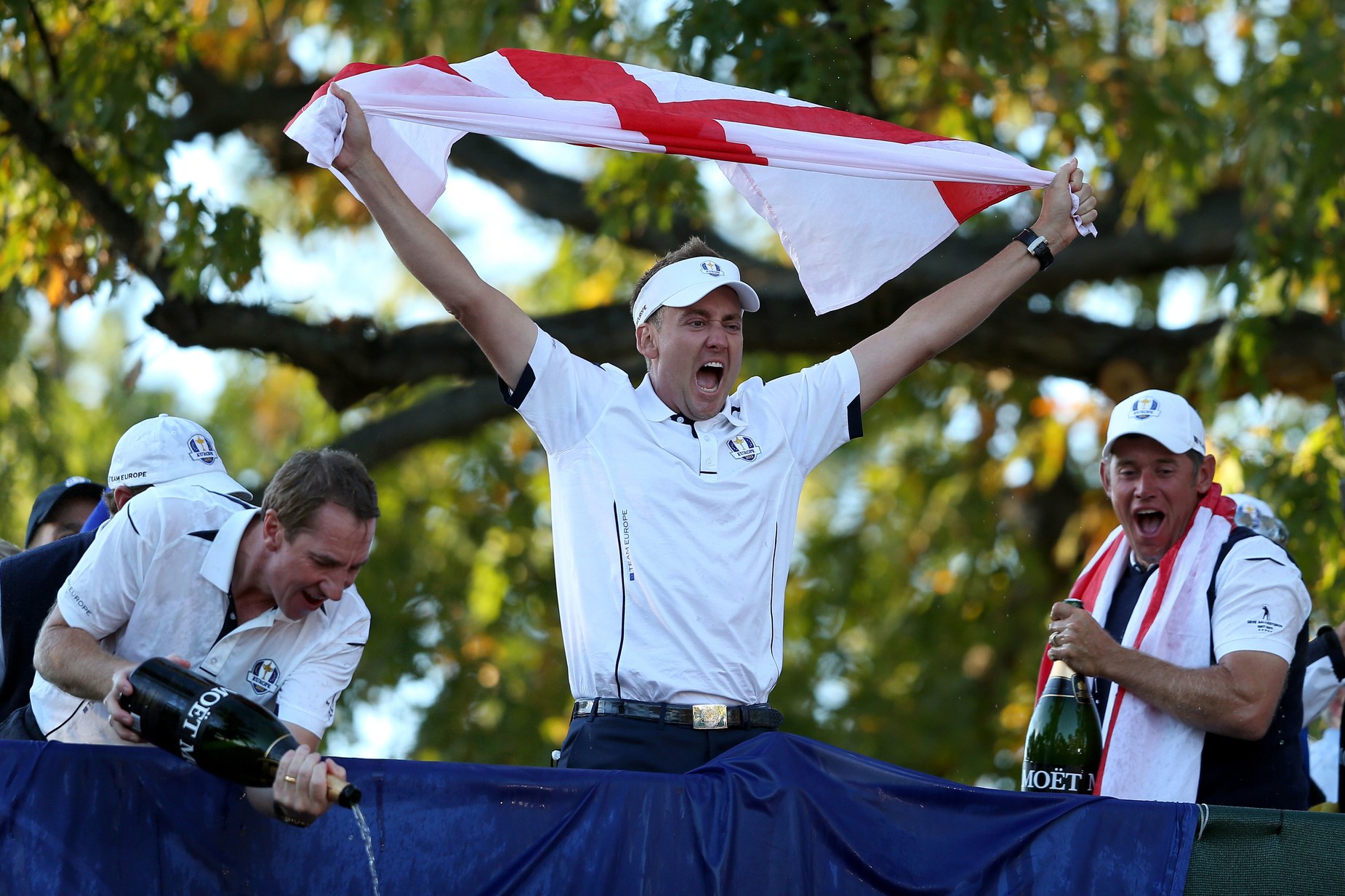
Andy Lyons/Getty Images
The Euros comeback in 2012 at Medinah was sparked by Poulter’s perfect play.
2012: The Comeback, The Sequel
The proverbial shoe was on the other foot at Medinah, the Americans having run out to a 10-6 lead entering Sunday singles and the Europeans needing the miracle. But Ian Poulter’s impressive late rally with Rory McIlroy on Saturday afternoon helped trim the deficit to four points and inspired his teammates for arguably the most impressive comeback in Ryder Cup history. In short, the Europeans turned into the Europeans again, winning 8½ of the 12 available singles points. More memorable than Brookline? Perhaps. It’s hard not to think, though, given the Euros accomplishing it on the road that it wasn’t more improbable. And, yet again, the Ryder Cup became a greater spectacle than previous imagined.
[divider] [/divider]
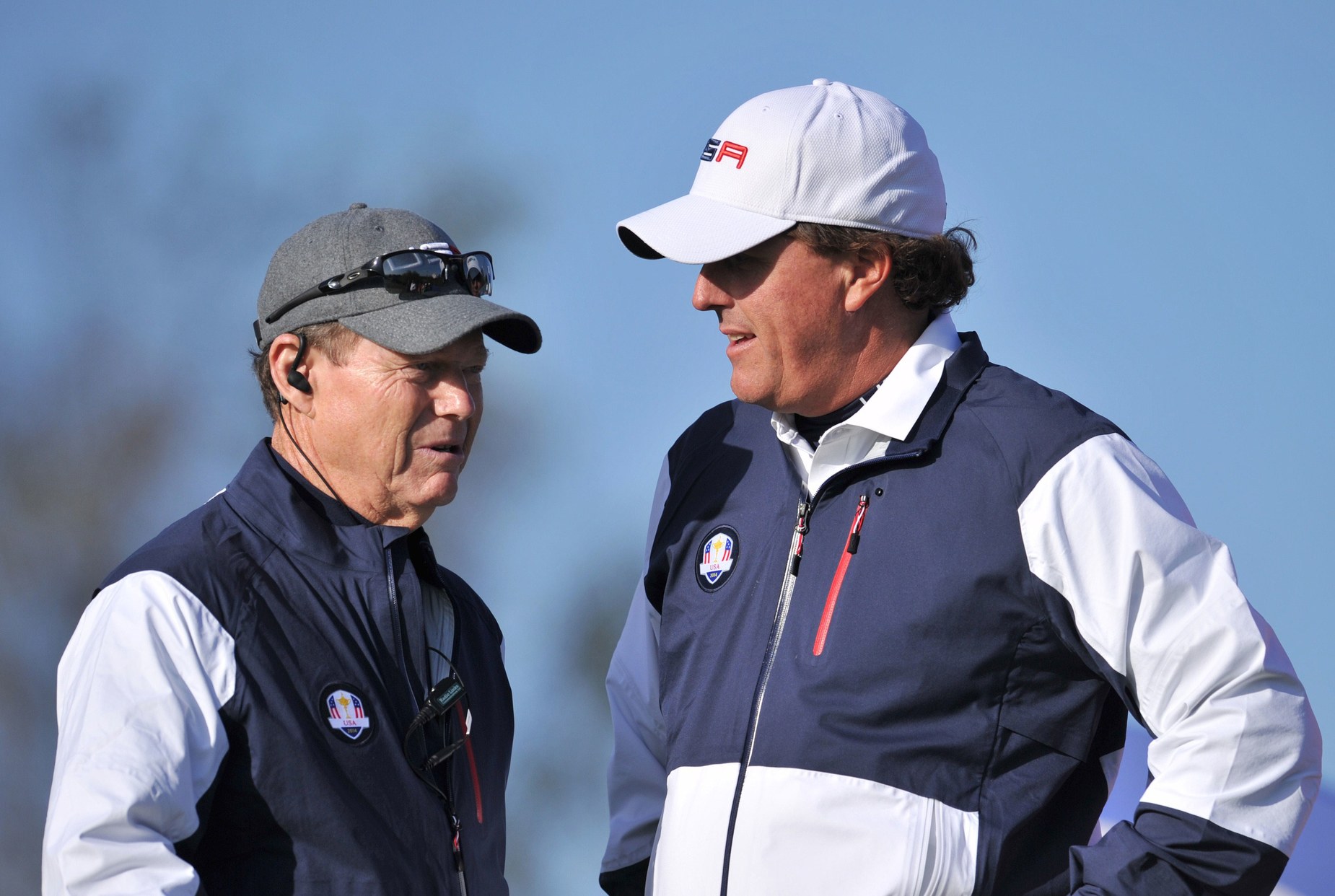
Glyn Kirk/AFP/Getty Images
Watson and Mickelson tried to work together, but their differences would bubble over.
2014: The Press Conference
It was an ugly week for the American Ryder Cup team, trounced at Gleneagles, 16½-11½, for yet another loss in the match. And it only got uglier in the Sunday evening press conference. With the entire American team present, Phil Mickelson openly questioned the leadership of U.S. captain Tom Watson, sitting not far from him on the podium. There was a surreal feel to this act of honesty—and defiance. And yet it set in motion a chain of events that you could argue has put the U.S. in the best position it has been in to compete and win the Ryder Cup in decades. Mickelson’s decrying of the commitment and organisation of the U.S. Ryder Cup effort led to the infamous Task Force charges to help identify ways the Americans can create a blueprint for long-term success.
[divider] [/divider]
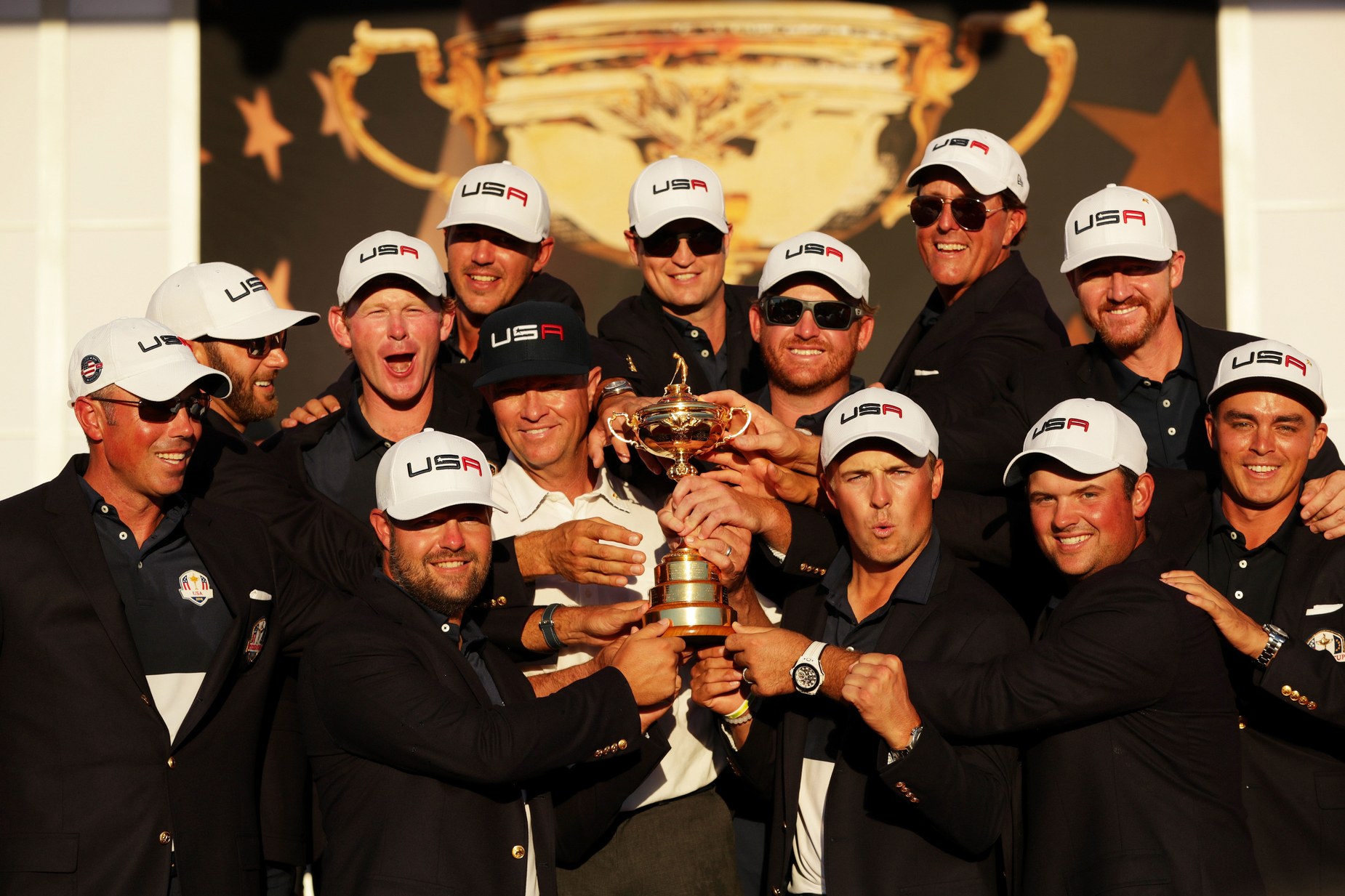
Streeter Lecka/Getty Images
A happy American team wins for the first time in eight years at Hazeltine.
2016: The start of another American run?
If the Americans’ 17-11 victory at Hazeltine National was the result of all the madness that followed Gleneagles, then maybe the pain was worth it. The U.S. team looked more organized and engaged. And the timing couldn’t have been better as the rise of the next generation of top American players (Jordan Spieth, Brooks Koepka, Rickie Fowler, Patrick Reed, etc.) meant for a collective group determined to change the direction of the competition. Of course, the bigger test of the long-term viability of the new blueprint comes this week in Paris, where the U.S. is trying to win on the road for the first time since 1993. The fact that they’re the favorites suggests hints that they might be on to something.









